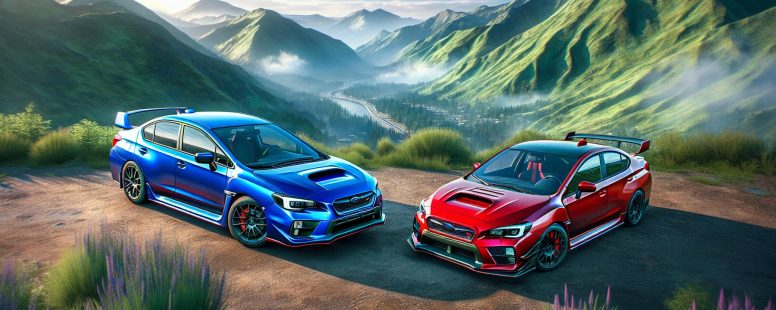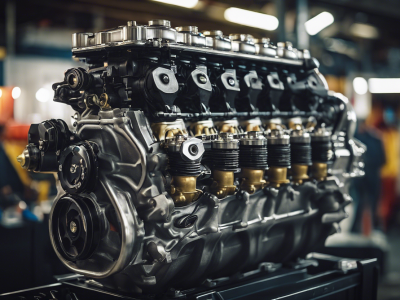Key Differences Between WRX and STI: Which Subaru Performance Car is Right for You?
If you’re a fan of performance cars, chances are you’ve come across the Subaru WRX and STI. These two rally-inspired machines have built a cult following, but choosing between them isn’t as simple as it seems. At first glance, they might look like siblings cut from the same cloth, but dig a little deeper, and you’ll find they’re worlds apart in personality and purpose.
Do you crave raw power and track-ready precision, or are you after a daily driver with a thrilling edge? The WRX and STI cater to different needs, offering unique driving experiences that set them apart. Whether it’s the rumble of the turbocharged engine or the razor-sharp handling, understanding their differences could be the key to revealing your perfect ride. Ready to jump into what truly separates these two icons? Let’s break it down.
Overview Of The WRX And STI
The Subaru WRX and STI are high-performance vehicles designed for drivers seeking excitement and precision. Both models share the same platform—a compact sedan engineered for speed and control. Even though their shared roots, their engineering and targeted driving experiences diverge significantly.
The WRX offers a 2.4-liter turbocharged Boxer engine producing 271 horsepower. It focuses on balanced performance, making it versatile for daily commutes and weekend drives. Equipped with Subaru’s Symmetrical All-Wheel Drive and advanced safety features, the WRX delivers reliability alongside spirited handling. Modern technology like the Subaru STARLINK infotainment system further enhances usability.
The STI, on the other hand, pushes the performance envelope with a turbocharged 2.5-liter Boxer engine boasting 310 horsepower. Designed for track-oriented experiences, the STI features a Driver Controlled Center Differential (DCCD) for enhanced traction and adjustability. This model incorporates Brembo brakes and stiffer suspension, prioritizing sharp cornering and raw speed. While the interior includes premium touches like Alcantara seats, its cockpit gears towards functionality over luxury.
Both cars reflect Subaru’s rally heritage but cater to different audiences. The WRX fits well in daily driving scenarios, while the STI attracts enthusiasts valuing high power and rugged capability.
Key Differences Between WRX And STI
Both the Subaru WRX and STI cater to performance enthusiasts but offer distinct driving experiences. Here’s how they vary across critical aspects.
Performance And Engine
The WRX is powered by a 2.4-liter turbocharged Boxer engine with 271 horsepower, delivering a balanced blend of capability and efficiency. The STI, on the other hand, boasts a 2.5-liter turbocharged Boxer engine with 310 horsepower, designed for high-performance demands. Its increased power output enhances acceleration and track performance.
Drivers of the WRX appreciate its daily practicality, while the STI’s engine tuning appeals to those seeking unmatched sporty thrill. The STI also utilizes unique performance features, such as stronger pistons, to handle the added power.
Transmission Options
The WRX offers a 6-speed manual transmission or an optional Subaru Performance Transmission (SPT) automatic. These options cater to drivers who value convenience or a traditional manual experience.
Only a 6-speed manual transmission is available for the STI. This transmission enhances engagement and control, especially during spirited driving or track use. The focus here is ultra-precise gear-shifting for maximum performance.
Handling And Suspension
Both cars use Subaru’s Symmetrical All-Wheel Drive but differ in suspension setup. The WRX features a suspension tuned for comfort and everyday usability without sacrificing agility. Contrastingly, the STI uses stiffer springs and dampers, tailored for cornering precision and road feedback.
The STI also includes a Driver Controlled Center Differential (DCCD), allowing settings that adjust torque distribution for user-customizable handling. WRX drivers don’t get this option but benefit from a smoother ride over varied road surfaces.
Exterior And Design Features
The WRX presents a modern, understated exterior with functional elements like LED headlights and a hood scoop aiding turbocharger cooling. The STI builds on this, adding a larger rear wing and aggressive trim elements that align with its high-performance focus.
Exclusive STI cues include 19-inch alloy wheels and Brembo-branded brake calipers. WRX exteriors feel minimally sporty, while STI exteriors overtly signal its formidable capabilities.
Interior And Comfort
Inside, the WRX balances sportiness with comfort through materials like soft-touch plastics and bolstered cloth seats. Its Subaru STARLINK system delivers excellent infotainment features for everyday use.
STI interiors emphasize performance, with features like Alcantara-trimmed Recaro seats and carbon-fiber accents. Focused on track purposes, the STI sacrifices some luxury feel, making it less plush for long commutes than the WRX. For comfort priority, the WRX shines, while the STI zeroes in on functionality.
Pricing And Affordability
The Subaru WRX offers greater affordability, with a starting price of approximately $30,605. It positions itself as a budget-friendly performance car, ideal for those who want sporty capabilities without high costs. Standard features like Subaru’s Symmetrical All-Wheel Drive make it a solid value package for its price range.
The STI, starting close to $44,890, reflects its focus on high performance with premium components. The advanced technology, including the Driver Controlled Center Differential and Brembo braking system, justifies the higher cost but places it in a distinct category. It’s aimed at enthusiasts willing to invest more for a true motorsport experience.
For new buyers, the WRX is a practical option with a lower entry point, while the STI appeals to those prioritizing power and enhanced handling, even though being more expensive. Comparing leasing or financing options might reveal additional costs, such as higher insurance premiums for the STI due to its status as a high-performance vehicle.
Which One Should You Choose?
Your choice between the WRX and STI depends on your driving habits, preferences, and budget. The WRX suits those seeking a versatile daily driver that balances power and comfort. Its 271-horsepower engine, paired with options for automatic or manual transmission, makes it accessible for both enthusiasts and convenience-focused drivers. The modern infotainment system and smoother suspension highlight its practicality for commuting or weekend road trips.
If your priority is raw performance and track-ready features, the STI offers unmatched thrills. With its 310-horsepower engine, Brembo brakes, and advanced DCCD system, it’s built for high-speed precision and aggressive cornering. But, its stiffer ride and manual-only transmission mean it’s less forgiving for casual driving. The STI caters to individuals who value adrenaline over comfort.
Pricing also plays a significant role. For instance, the WRX’s starting price of $30,605 makes it appealing for budget-conscious buyers, whereas the STI’s $44,890 base price reflects its premium performance features. Consider not just the purchase cost but also long-term expenses like maintenance and insurance when deciding.
Ask yourself how you’ll primarily use the car. If you navigate daily traffic or prefer a smoother ride, the WRX delivers practicality. For weekend track days or showcasing rally-inspired capabilities, the STI commands attention. Your decision becomes clearer by weighing performance needs against usability and cost.
Conclusion
Choosing between the Subaru WRX and STI comes down to your driving style, priorities, and budget. Both models deliver exceptional performance rooted in Subaru’s rally heritage, but they’re designed for different experiences. Whether you’re after a practical yet thrilling daily driver or a powerhouse built for the track, there’s a model that fits your needs.
Take time to evaluate how you’ll use the car and what features matter most to you. By aligning your preferences with each model’s strengths, you’ll find the perfect balance of performance, comfort, and cost for your lifestyle.
- King vs Queen Size Bed: An In-Depth Comparison for Your Perfect Mattress Choice - October 29, 2025
- Krill Oil vs Fish Oil: Key Differences, Benefits, and Choosing the Right Omega-3 Source - October 29, 2025
- Understanding the Difference Between OT and PT: A Comprehensive Guide - October 29, 2025







